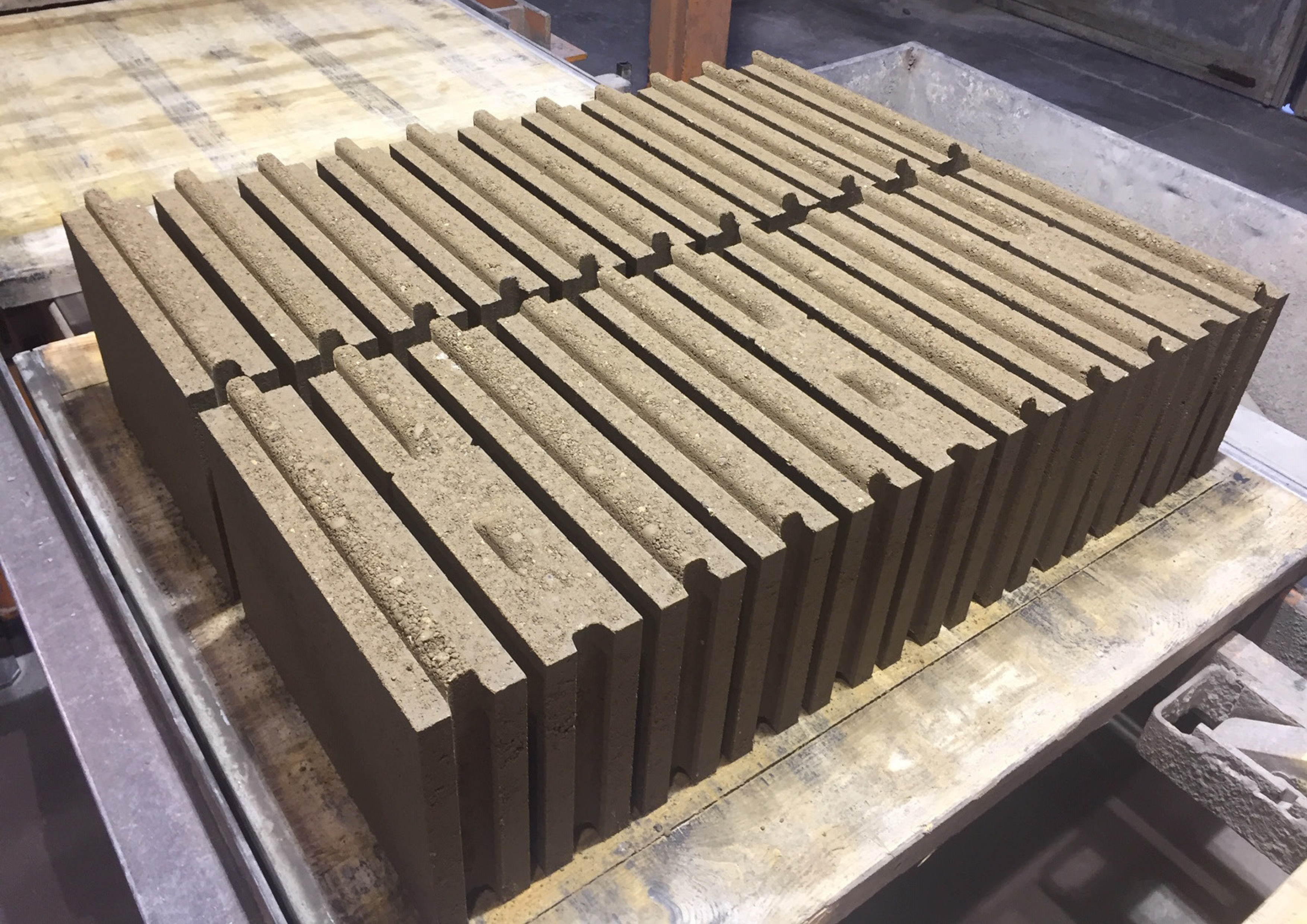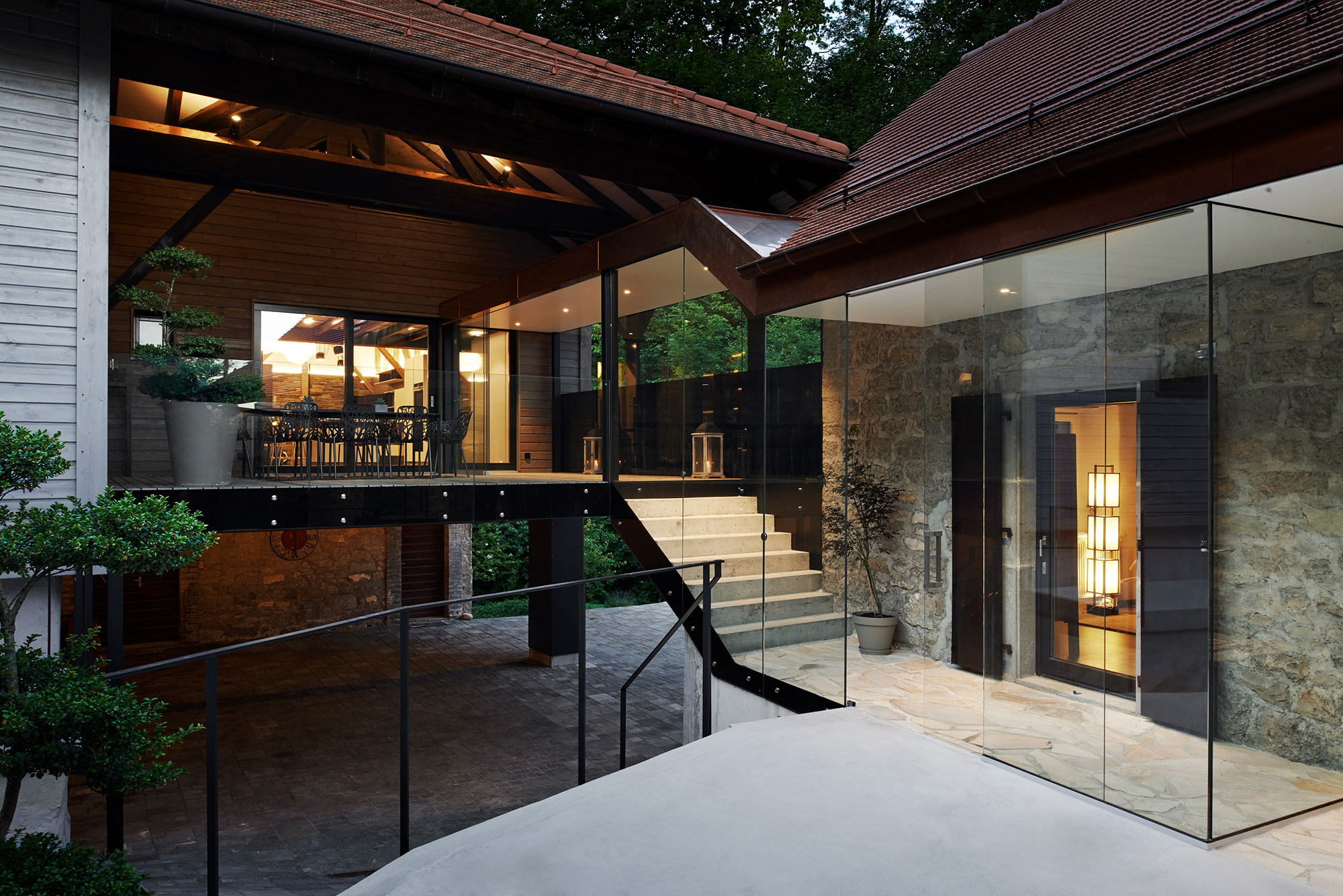The energy transition and photovoltaics: the future is solar
When sustainability meets energy efficiency, photovoltaics plays a central role. In the current political climate, and with its commitment to the 2050 strategy, Switzerland is committed to building a sustainable future with the aim of becoming carbon neutral. To this end, photovoltaics has been positioned as one of the main pillars of a decarbonised energy supply.
To meet these ambitious goals, every available surface has to be considered. This is why the Confederation has outlined specific, complementary economic incentive measures for integrated façade-mounted installations. Its interactive application for predicting the solar energy potential of existing buildings is available online, with two scopes: one for roofs, and the other for façades.(1)

Financing
To encourage more installations, the Swiss population can benefit from federal measures for both small and large installations: the rétribution unique (single compensation system) (2), which is supplemented by cantonal and municipal subsidies. (3)
Here, three categories of installations are outlined:
- Isolated: Installed on a free-standing surface with its own structure, not connected to any building or infrastructure.
- Added: Mounted on a roof or façade without altering the function of the supporting surface.
- Integrated: Has a dual function as an integrated part of the building’s structure (more details below).
For the first two categories the fee is the same. For integrated photovoltaic installations, an additional bonus amount is allocated.
Prices of solar panels have decreased substantially in recent years, nearly halving over the past five years, while the variety of products available on the market has grown.
Why, despite the aforementioned economic incentives, is photovoltaic integration still so challenging?
When it comes to energy-related issues in buildings, these are still often perceived as a necessary evil (5) or challenge to be overcome. Foreseeing legal requirements, as the project nears its final phase and is submitted for assessment by experts, the question arises: where can these panels be placed?
Our strategy? Anticipation! As in all areas of design and project management if a successful outcome is to be achieved, anticipation is key. By evaluating potentials and goals in terms of energy production, and predicting implications well in advance during the project process—starting right from the research phase, in collaboration with the client—an infinite range of possibilities opens up to us.
Why not façades?
Solar façades are particularly beneficial for generating electricity in winter when demand is highest, producing 40–50% of a building’s total annual electricity output. This is due to the sun’s low position in the sky at our latitudes, allowing façades to achieve up to 30% (6) more production compared to flat rooftop installations of a similar size. Solar façades alone have the potential to cover up to 10% of Switzerland’s electricity needs.
Photovoltaic installations on façades with different orientations can span a broader spectrum of self-consumption (10) throughout the day, generating electricity from morning to evening as the sun moves from east to west.
Currently, along with their great diversity, the surge of new technologies entering the market meets the highest aesthetic standards. This enables other façade cladding materials to be replaced with solar solutions.
Because of their electrical efficiency, any additional costs versus other façade materials can be recovered within a few years.
Moreover, the costs of photovoltaic installations are comparable to high-quality solutions such as ventilated façades, which boast particularly long lifespans and enable energy savings through reduced maintenance needs.
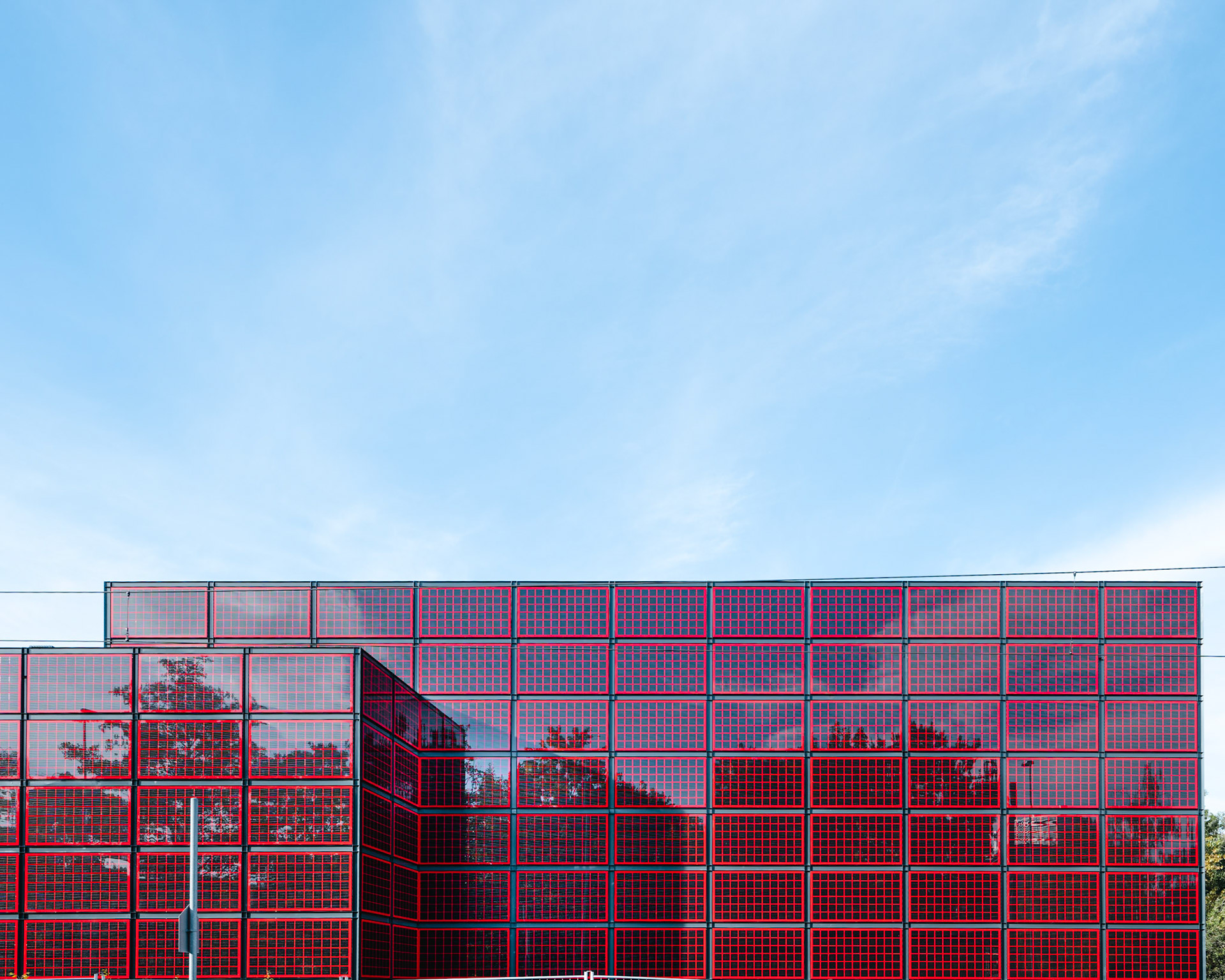
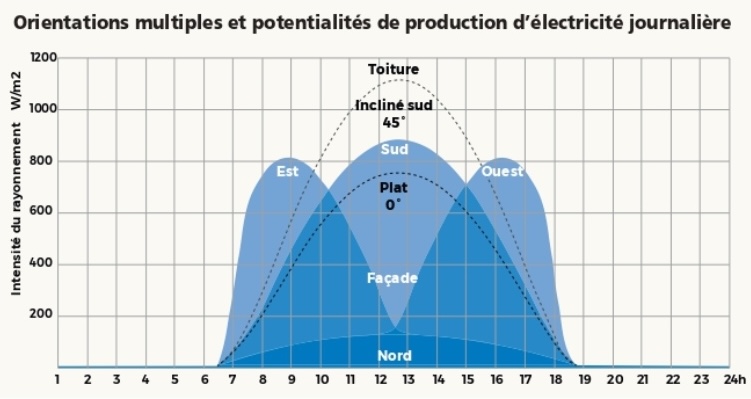
BIPV integration —what is it?
With BIPV (7), the issue of aesthetics is no longer a barrier, yet a whole array of technical advancements and integration potential remain largely untapped.
The composition of photovoltaic material resembles glass architecture, a material considered one of humanity’s oldest creations. The early 19th century saw the emergence of a new architectural genre, made up of steel and glass, exemplified by the Crystal Palace at the 1851 Universal Exhibition in London. Since then, its use has been mastered in this type of architecture. Today, bespoke photovoltaic elements can replace traditional glass components. (8)
Major technological advances now support a broad variety of possibilities for integration, including a wide variety of colours, shapes and textures through innovative materials that can be adapted to each project’s architectural needs.
A variety of shapes, dimensions, textures and colours:
Photovoltaic façade modules are composed of laminated safety glass, ensuring optimal safety in the event of breakage.
The largest modules can reach dimensions of up to 2.4m x 5.1m, including insulating glass of varying thicknesses to meet static and thermal constraints, as well as many different types, formats, and shapes. They may feature perforated or even coloured cells. Colouring options include film, screen printing, and nanotechnology applied to the glass layer above or below the photovoltaic silicon cells, allowing them to be rendered invisible or integrated into a checked pattern against a coloured background with varied spacing and layouts. Additionally, glazing can be more or less translucent depending on the distance between cells. Finally, derived directly from traditional glass craftsmanship, their flexibility means that a variety of textures can be applied to the glass surface.
Mounting systems are equally diverse, including invisible hooks behind the glass, lateral mounts, and clamps at the four corners of the glass.
When these areas are considered early in the design process and interrogated in the initial discussions with the client, the panels can be integrated in a way that is not only aesthetically pleasing, but also rational and structural. In this way, photovoltaic elements can be used in their own right as materials for the building envelope. As such, solar modules are transformed and integrated into the building envelope’s constituent and structural elements, while simultaneously generating energy.
As a replacement for element in the building envelope / equivalent building component functions, such as:
- On the roof as roof tiles or skylights
- On opaque façades as a cladding system or counter-core
- On translucent roofs and façades
- As fall protection, e.g. balustrades and balcony railings
- As solar protection, natural lighting, solar control, awnings, etc.
The material's flexibility means it can be integrated into any type of building—particularly protected buildings. In this instance, BIPV integration allows increased requirements to be met, depending on the degree of protection and positioning: the roof's geometry, its proportions, orientation, and material. (9)
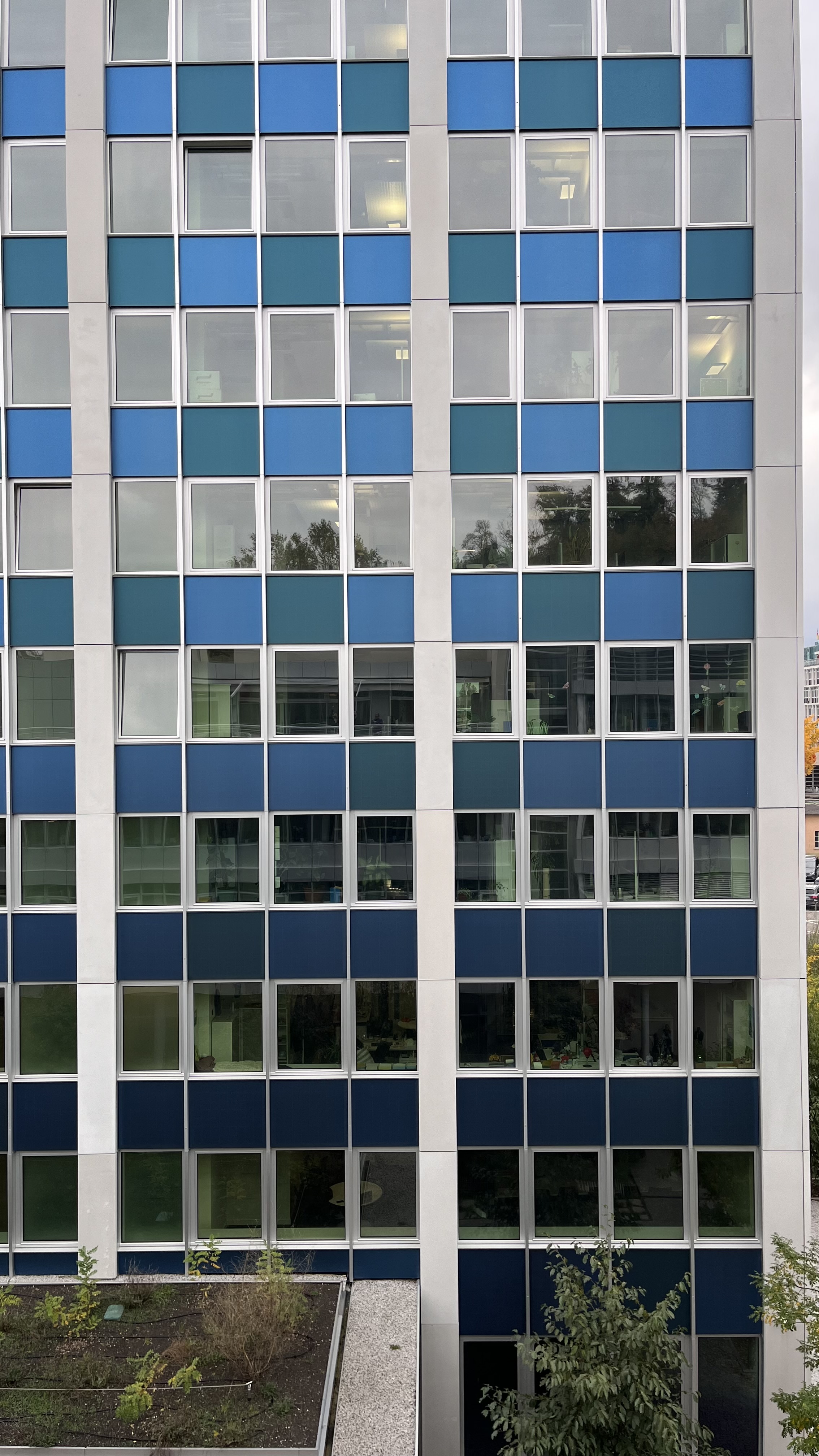





Is photovoltaic material truly sustainable?
Unlike many preconceived ideas, photovoltaic panels are made from natural resources that are almost unlimited in nature, giving them a very positive ecological balance. A photovoltaic installation, designed to last for more than 25 years, is essentially made up of glass (90%), wafers (or PV cells) of silicon made from quartz sand (the second most abundant element in the Earth's crust), aluminium (for the fixings and assembly, which can be recycled ad infinitum) and copper (for the electrical components).
Most of these elements can be reused later in new installations, even after a service life of 30 to 40 years. In other words, an installation pays for itself in energy terms after just two years of operation. Energy production is estimated to be 10 to 15 times lower than its manufacturing cost (including manufacturing, transport, installation and recycling).
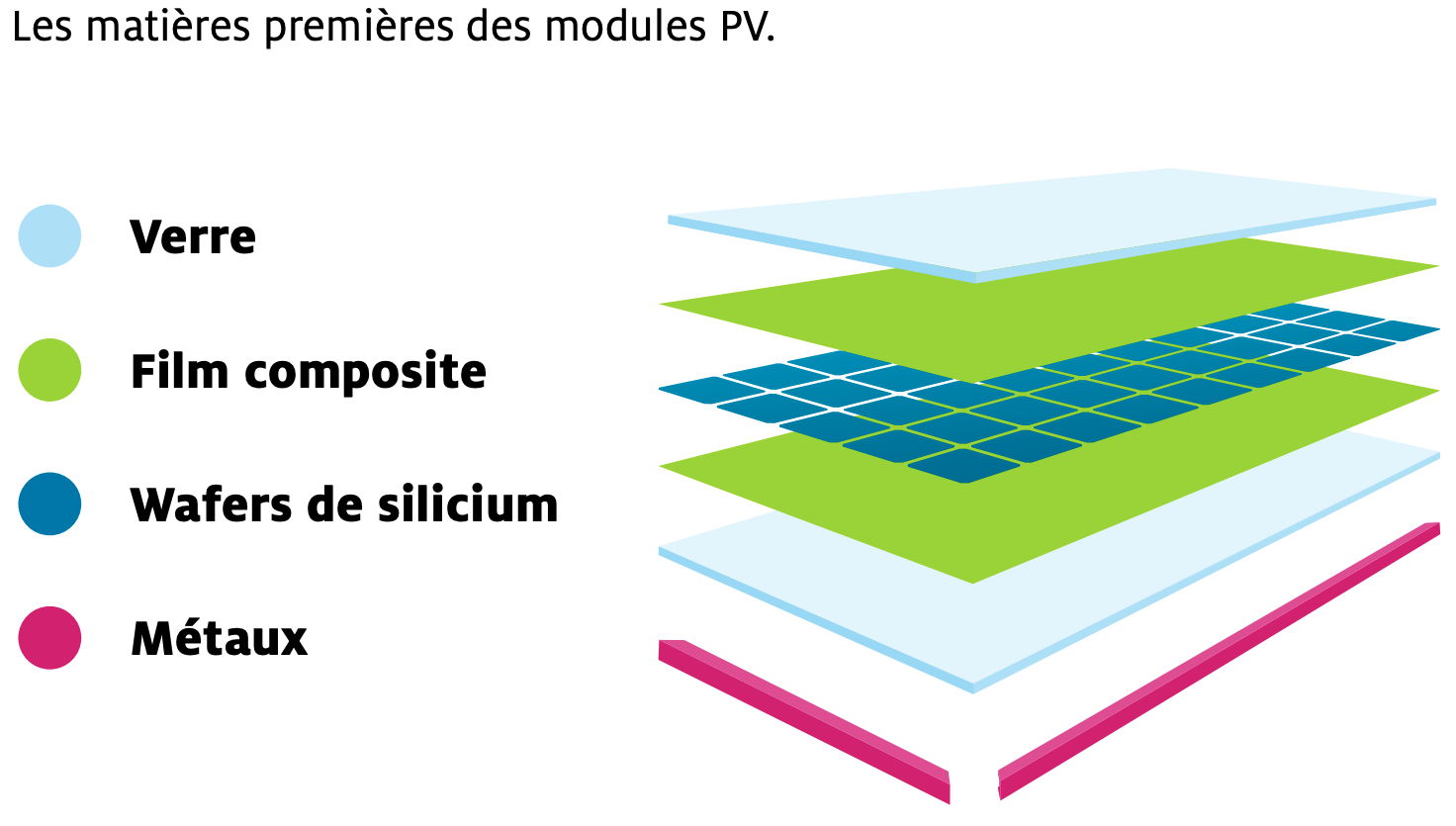
The recycling of photovoltaic modules is ensured in Switzerland by the SENS foundation, in particular through the advance recycling charge (TAR) levied when the installation is first purchased. More than 75% of a PV module is recycled for re-use. In addition, the recycling of silicon cells is steadily increasing, with the aim of contributing to a circular waste economy through optimized recovery. (10)

Promoting self-consumption
Self-consumption (11) is economically advantageous for meeting electricity needs. It reduces the burden on public storage infrastructure, eliminates network usage fees and various taxes (12), and accelerates the installation’s payback period. Self-consumption can be optimised by self-consumption pooling (13), now to an even greater extent with the adoption of the law on 9 June 2024:
- Virtual association for self-consumption (VZEV / REG): use of connection lines to the distribution network for self-consumption.
- Local electricity community (LEG): locally produced electricity can be marketed across a district or municipality via the grid.
-energie-experten.ch ; Graphique- Faktor Journalisten.png)
Self-consumption optimisation strategies:
- Use concept / management of electricity consumers: Heat pumps, electric water heaters, and e-mobility (electric vehicles for storing generated electricity)
- Sizing the installation taking into account potential future expansion
- Pooling the use of electricity
- Storage batteries (can be added later)
.png)
Self-consumption for individual homes
Self-consumption in individual homes is simple, cost-effective and environmentally friendly. For each kilowatt-hour consumed from your system, depending on where you live, you will save approximately 25 cents on electricity supply costs. Depending on the proportion of your production consumed directly by you (self-consumption rate), you can save between CHF 300 and CHF 700 per year through self-consumption. This is supplemented by income from selling surplus production. (12) The investment is finally very profitable, and will be even more so in years to come in view of the likely rise in electricity costs, as in addition to the satisfaction of producing your own electricity and moving towards self-sufficiency.
.png)
For a medium-sized individual home, a roof solar installation measuring approximately 20m² can cover 80% of a family of four’s yearly electricity needs.
Minergie Explained
The Minergie labels—particularly Minergie-A, which aims to cover all energy needs—emphasise energy efficiency and maximising the use of renewable energy. With their ability to produce electricity sustainably and self-sufficiently, photovoltaics play a central role in meeting label standards. The goal is to meet restricted energy needs for operations and to optimise self-consumption.
The integration of a load management system (LMS) is a particularly useful tool for meeting these standards, as it optimises consumption by prioritising switchable devices in their use of photovoltaic electricity based on availability. Coupled with targeted measures, this can nearly double the self-consumption rate. For instance, variable-capacity heat pumps (VCHPs) combined with a technical heat storage unit (accumulation tank) directly address this need.
Photovoltaic installations for generating electricity can meet cantonal energy regulations, which require self-produced electricity, while also meeting requirements for the Minergie-A label, provided the capacity is sufficient.
Although the initial costs of photovoltaic installations may seem high, the additional margins are low, and there is significant added value in terms of energy efficiency. (10)
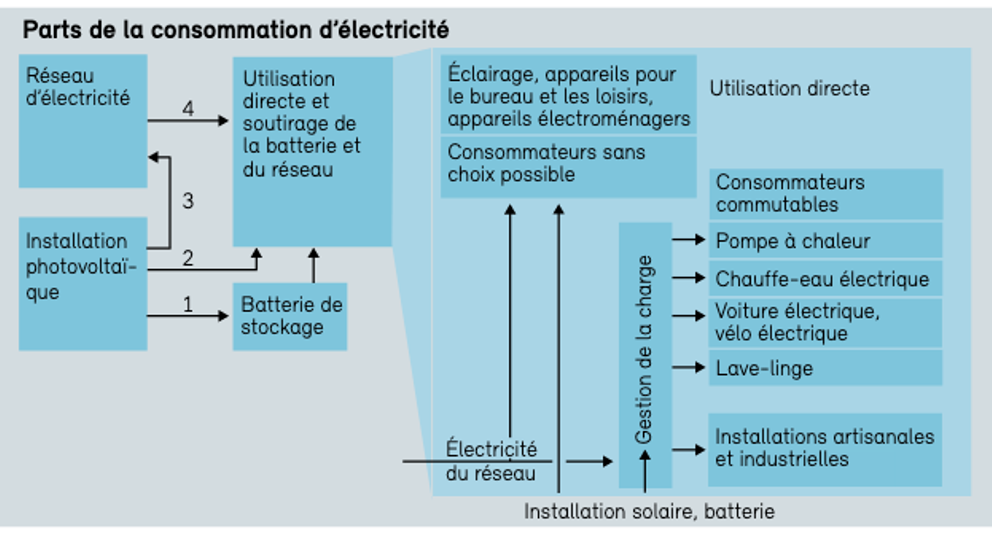
Conclusion
When it comes to the energy transition, while often perceived as an aesthetic constraint, integrating solar panels into architecture is proving essential. The architectural quality of “solar design” reveals the full potential of a multidisciplinary approach bringing together energy, design, and construction, facilitated by federal and cantonal economic incentives.
Solar façades make a significant contribution to more efficient electricity production throughout the day and the year as a whole, including during the winter months.
Well thought-out, harmonious, functional BIPV integration not only enhances the market value of properties through architectural revaluation, but also increases the buildings’ energy efficiency.
Far from being a necessary evil, photovoltaic panels are a genuine opportunity, marking a clear step towards a sustainable future.
Ressources
- Swissolar is the Swiss professional association for solar energy.
- The SwissEnergy programme was set up by the Swiss Federal Council to promote energy efficiency and renewable energy, offering guidance on these matters.
- SENS eRecycling: Swiss experts in the sustainable recycling of used electrical and electronic equipment, light sources and luminaires.
Bibliography
(1) Toitsolaire.ch & facade-au-soleil.ch
(2) Single investment contribution, federal – bfe.admin.ch
(3) Swiss subsidy programmes for energy and mobility – francsenergie.ch
(4) This will increase from CHF 250 to CHF 400/kW of installed capacity for integrated installations, and from CHF 100 to CHF 200/kW for added or isolated installations. – swissolar.ch
(5) Solar architecture references – solarchitecture.ch
(6) Facilitating photovoltaic facades – swissolar.ch
(7) Building-integrated photovoltaics (BIPV): component of the building envelope (i.e. its cladding, glazing and architectonics) capable of generating energy from the sun. Basic element of the construction system, replacing traditional building materials and systems – bipv.ch
(8) Architectural integration of solar energy, SFOE– bundespublikationen.admin.ch
(9) Photovoltaic strategy, State of Fribourg 2023 – fr.ch
(10) SENS eRecycling – erecycling.ch Factsheet / erecycling.ch SENS Blog
(11) Definition of self-consumption : the proportion of solar-generated electricity that is consumed directly, i.e. that is not fed into the grid. – minergie.ch
(12) Self-consumption benefits – energieschweiz.ch/gebaeude/eigenverbrauch
(13) The REG not only allows several consumers in one house, but also several plots of land to pool together and become a single customer to the energy supplier. – swissolar.ch

